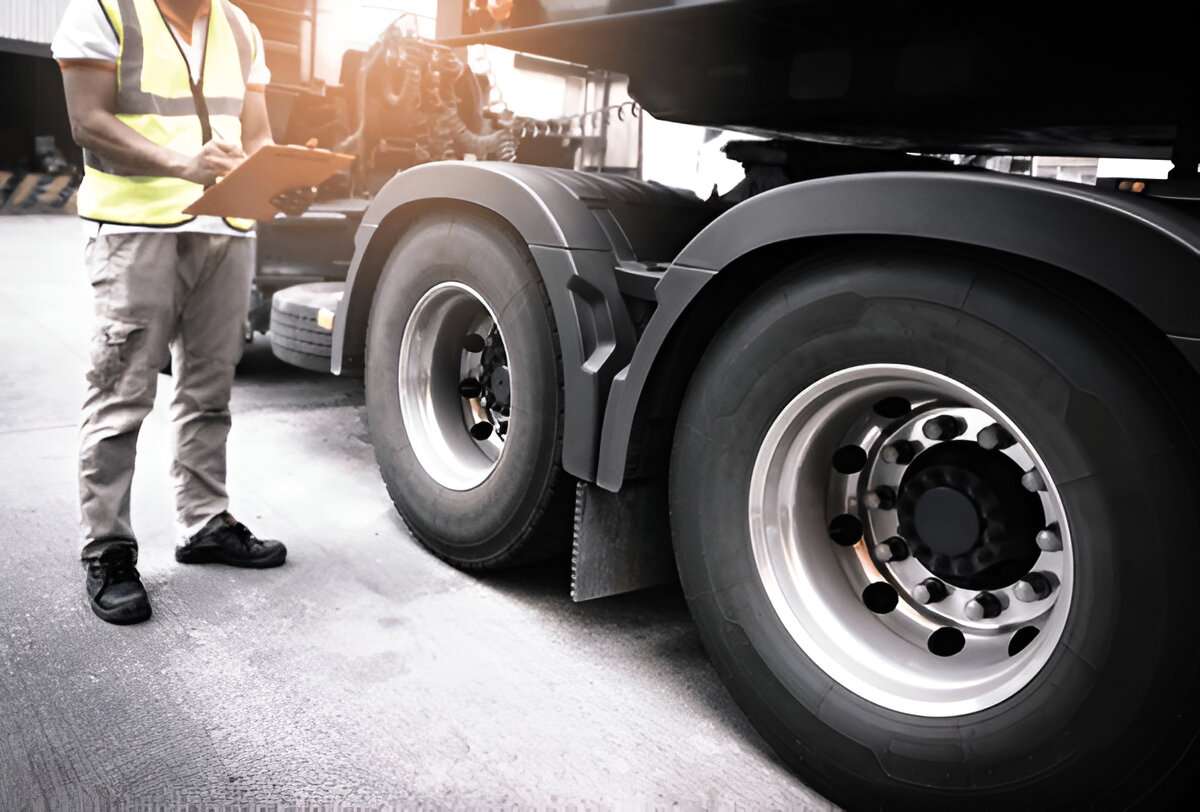When it comes to trailers, regular maintenance and quick identification of faulty parts can save you from costly repairs and potential breakdowns. Whether you’re using your trailer for personal or commercial purposes, ensuring the longevity and performance of its components is crucial. WONDEE trailer parts, such as trailer leaf springs, multi-leaf springs, and truck suspension springs, are designed for durability. However, like any heavy-duty trailer component, they will eventually wear out over time. In this article, we’ll explore how to identify faulty semi trailer parts before they lead to major issues.
Regular Inspection: The First Step in Preventive Maintenance
The key to identifying faulty trailer parts is regular inspections. These inspections help you spot potential issues early, before they become serious problems. A visual inspection is a great place to start. Look for any visible signs of wear and tear on components like trailer leaf springs, multi-leaf springs, or truck suspension springs.
Check for rust, cracks, or bent parts. Rust can corrode the metal, weakening its structure. Cracks, even small ones, can lead to complete failure if not addressed quickly. A bent spring, whether it’s a parabolic spring or a multi-leaf spring, will struggle to maintain the proper load distribution and could lead to imbalance and instability.
Uneven Ride or Handling Issues
If your trailer starts to feel unstable or bouncy, especially when carrying a load, it’s often a sign that something’s wrong with the suspension system. Worn-out trailer leaf springs or multi-leaf springs can no longer effectively absorb shocks, leading to poor handling. This can make driving uncomfortable and dangerous, especially on rough or uneven roads.
Uneven handling can also be a sign of other issues, such as worn truck suspension springs. When suspension components wear out, they can no longer properly distribute the weight of the load. This can cause the trailer to pull to one side or result in the vehicle swaying while turning. If you notice any of these symptoms, it’s essential to inspect the heavy-duty trailer components immediately.
Sagging or Drooping Trailer
One of the most obvious signs of faulty trailer parts is when your trailer begins to sag or droop on one side. This could be the result of a broken or weakened trailer leaf spring. As leaf springs age, they lose their ability to support weight effectively, leading to uneven weight distribution. A sagging trailer can cause problems with handling, tire wear, and may even put excess strain on other parts, such as the axles or suspension system.
If your trailer appears to be leaning or if the front or back is sitting lower than it should, this is a clear sign that the trailer leaf springs require attention. Failing to replace them can lead to more severe damage and costly repairs.
Noises and Vibrations During Operation
An abnormal amount of noise or vibrations during operation is another red flag for faulty trailer parts. If you hear squeaking, clunking, or creaking sounds, or feel unusual vibrations while driving, it could be a sign of wear in the truck suspension springs or parabolic springs. These components are designed to absorb shocks and maintain the trailer’s stability, but when they become worn, they can start to make noise or cause vibrations.
Excessive noise, especially when driving over bumps or potholes, suggests that the suspension system is struggling to do its job. These vibrations could lead to further wear on your semi trailer parts, including tires and axles, making early detection critical.
Excessive Tire Wear
One of the most common consequences of faulty trailer parts is uneven tire wear. When suspension components, such as the trailer leaf spring or truck suspension springs, are no longer functioning properly, weight distribution becomes uneven. This uneven distribution causes some tires to bear more weight than others, leading to excessive or uneven tire wear.
If you notice that one or more of your tires are wearing down more quickly or in a way that doesn’t seem normal, it’s time to inspect the suspension system. WONDEE trailer parts, such as parabolic springs and multi-leaf springs, are designed to ensure proper load distribution. Therefore, regular checks are necessary to prevent issues that can impact your tires.
Difficulty with Load Handling
Another sign that your trailer parts are failing is when your trailer begins to struggle with loads it once carried easily. If your trailer leaf springs or truck suspension springs are no longer performing optimally, the trailer will have difficulty handling the weight. This could lead to the suspension system being overloaded, causing instability or even complete failure of the springs.
If you notice that the trailer is sagging more than usual when loaded or if the vehicle seems to be struggling to maintain balance, it’s important to inspect the suspension components. WONDEE trailer parts are designed for heavy-duty use, but even the best parts will wear down over time. Timely replacement of worn springs will prevent major issues that could affect both your load capacity and safety.
Poor Braking Performance
The condition of your suspension system directly affects the performance of your trailer’s brakes. When the suspension springs are worn, the trailer’s load distribution becomes unbalanced, which can put additional stress on the braking system. This can cause the brakes to perform poorly, especially under heavy loads.
If you experience any difficulty in braking or notice that the trailer takes longer to stop, it could be a sign that the suspension is not functioning properly. Worn parabolic springs or multi-leaf springs could be the cause, and it’s important to replace them before they affect your braking ability.
Addressing Issues Early to Avoid Big Problems
Identifying faulty trailer parts before it’s too late is key to preventing expensive repairs and ensuring the safety and longevity of your trailer. Regular inspections, paying attention to ride quality, and looking out for signs like sagging, noises, or uneven tire wear are all important steps in catching problems early.
When it comes to WONDEE trailer parts, using high-quality components is essential to maintaining the performance of your trailer. Replacing worn trailer leaf springs, parabolic springs, or truck suspension springs on time will not only keep your trailer running smoothly but also prevent further damage to other parts. Stay proactive with maintenance, and your trailer will continue to perform reliably for years to come.








